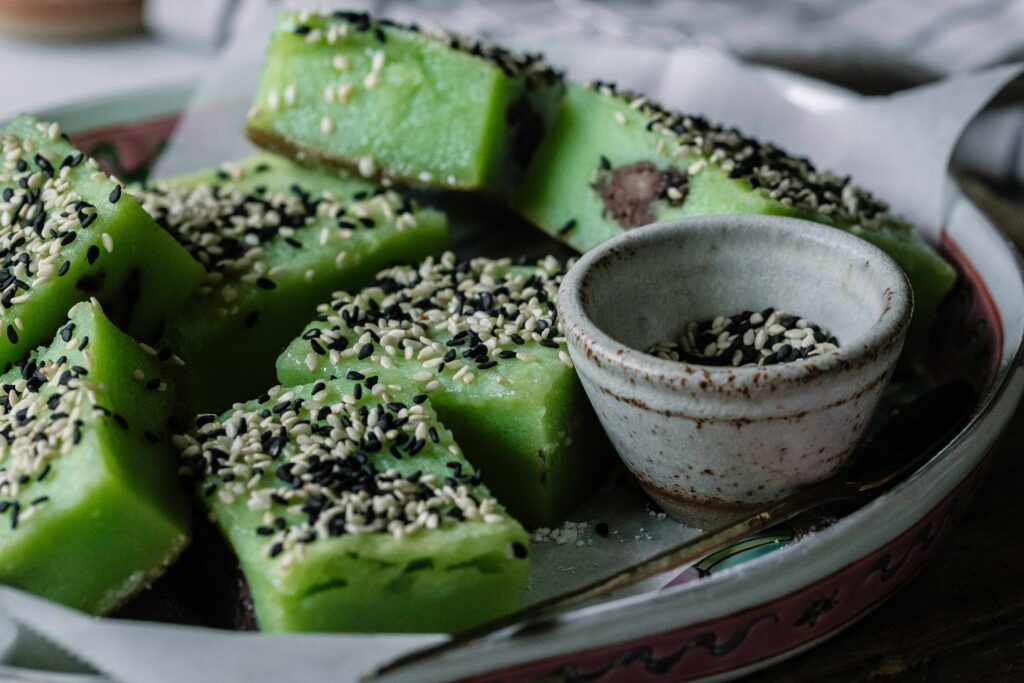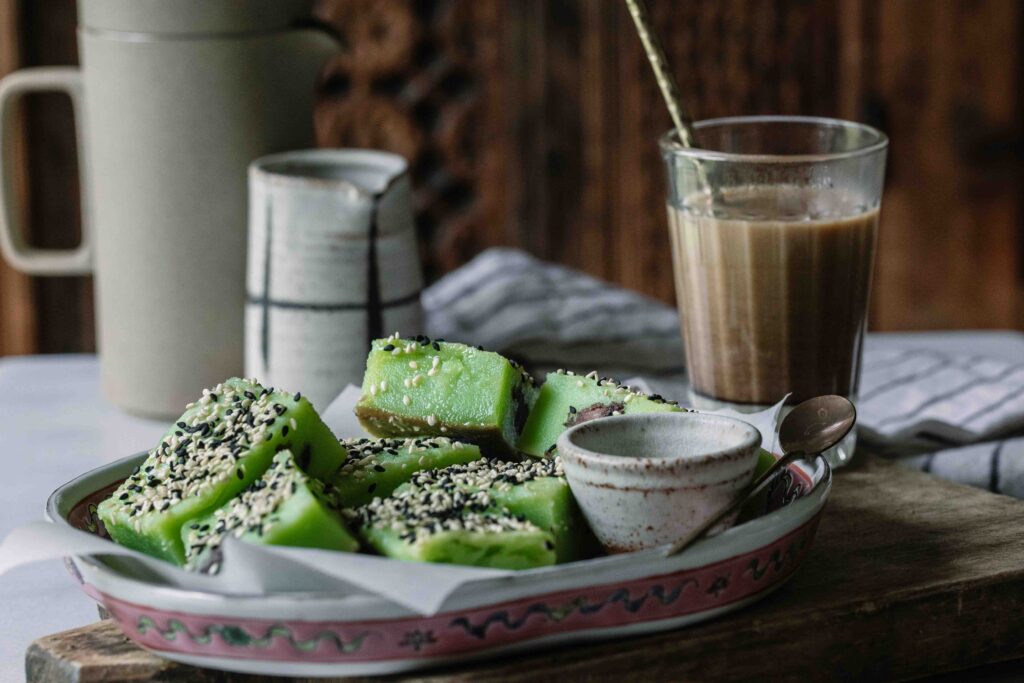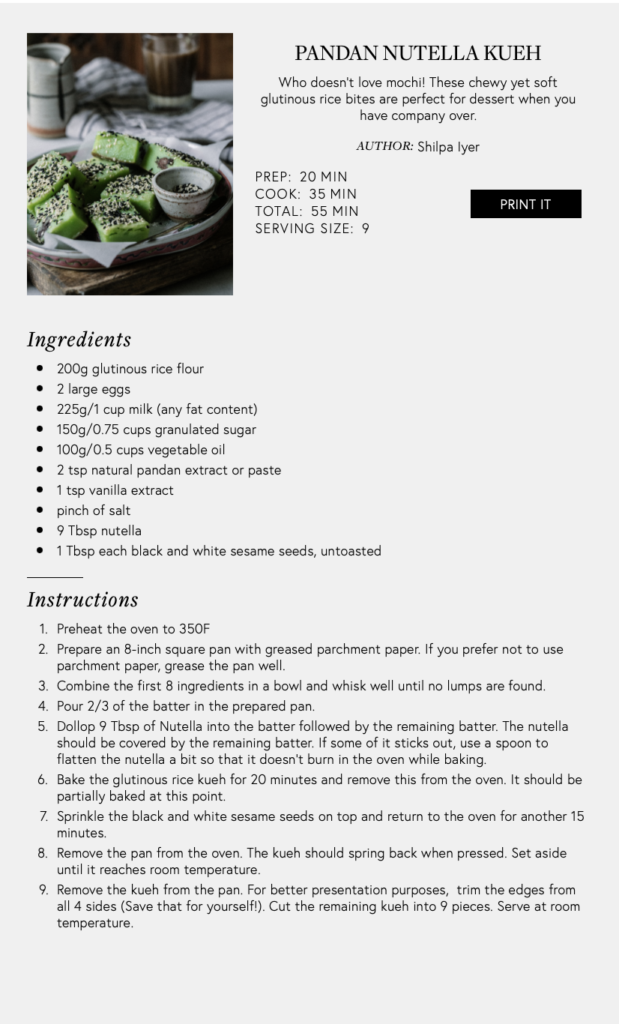For this year’s Chinese New Year celebration I wanted to make some homemade desserts that reminded me of the types of sweets (also known as kueh) I’d be happily consuming this time of year if I were back home celebrating with family and friends. One recipe that immediately came to mind was a mochi cake recipe that I first saw in one of my favorite cookbooks A Common Table by Cynthia Chen McTernan.

Ever since coming across it, the recipe has become somewhat of a staple in our household. It’s extremely forgiving and the possibilities of putting your mark on it are endless. Cynthia’s original version calls for peanut butter filled mochi cake with crushed sugary peanuts on top. The crushed sugar peanuts brought back childhood memories of the roadside hawkers selling paper cones of all sorts of nuts, my favorite of course being “kacang puteh” literally white peanuts or sugar peanuts!
The version I tend to make at home these days is a pandan-infused batter, with dollops of Nutella (because why not!) and instead of the crushed peanuts, I sprinkle black and white sesame seeds. The result is actually very similar to a Kueh Bakar Pandan, a custardy pandan-infused cake with coconut milk topped with sesame seeds that you’ll commonly find at many local Singaporean bakeries.
I created a video of how to make this recipe over on YouTube which you’ll find below. Definitely check it out – it’s one of those “dump the ingredients in a pan” type recipes and it’s always been a huge hit amongst our friends. Make sure you use glutinous rice flour for that chewy texture. I prefer the Thai Erawan brand of glutinous rice flour found at my local Asian store, but Mochiko brand of glutinous rice flour that you find more often at regular supermarkets will work just as well.
What is Pandan?
Pandan is a herbaceous plant that has been cultivated for home cooks in both South and Southeast Asia for centuries and imparts flavors of vanilla, coconut, and rose. This grassy plant, with its long blade-like leaves, is no longer found in abundance in the wild but is easily grown at home with just a little bit of care. Pandan is used in both savory and sweet dishes in Singapore and across the region. The use of pandan in savory dishes like the iconic Chicken Rice provides a subtle but important herbaceous note in the background, yet the aroma of pandan truly shines through when used in Singapore’s most popular traditional desserts. I always keep frozen pandan leaves in my freezer as well as have a bottle or two of natural pandan extract which I’ve purchased online. If you’re unable to find pandan extract or paste, feel free to use just the vanilla extract. While the flavor will be different, it’ll taste just as amazing.


Comments +